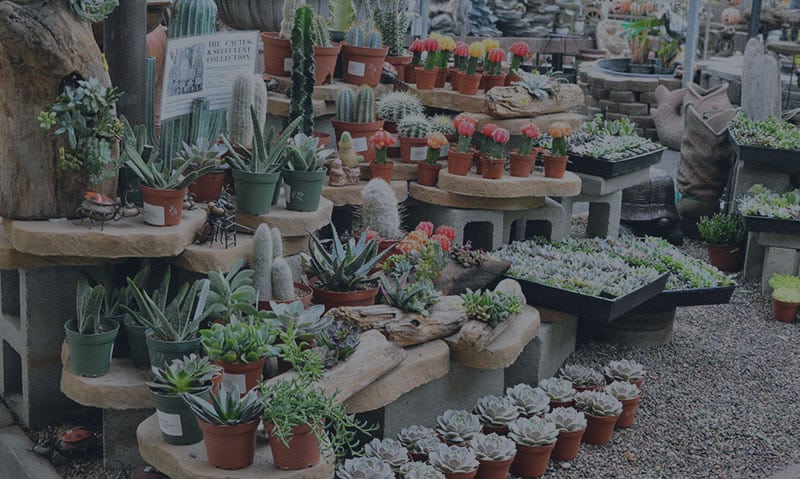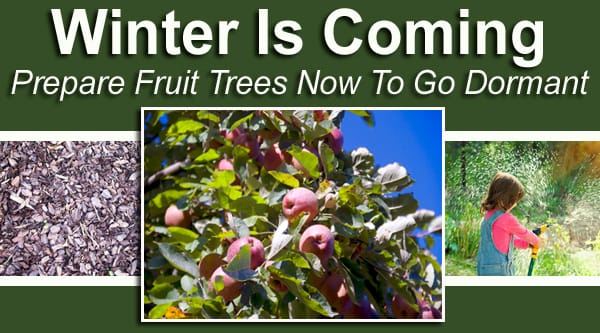Newsletter Articles
Winter Is Coming-Prepare Fruit Trees Now To Go Dormant
By Richard Flowers, ACCNP-Green Thumb Nursery-Ventura
Winter will be here before you know it and certain fruit trees need to lose all their leaves as one of the main requirements to set a quality crop of fruit the following season. If you have Apples, Apricots, Plums, Pears, Peaches, Cherries, Nectarines, Persimmons, Figs, Pomegranates, and Nuts you need to understand they need special attention during this time of year. During the fall, fruit trees are getting ready to “fall” asleep when the daylight decreases and the temperature starts to drop. During this time of year the trees metabolism slows down and produce growth inhibitor hormones that
signals the tree to start losing their leaves or going dormant (latin dormile-means to sleep). In our mild climate many times your fruit trees do not go fully dormant because the weather is warm and the tree thinks it can still grow. For example, the ever popular Anna Apple, this incredible Apple seems to have a mind of its own. This tree can produce Apples up to three or more times a year and it never really loses all its leaves especially in December and January. This phenomenon is common but it is not normal
because in December and January is when all the leaves should have fallen off the tree. Today, I want to share with you some tips that will help maximize the days of dormancy of fruit trees. But first I want to explain to you why it is so vital for your fruit trees to lose all their leaves during the winter.
Peaches, Apples, Pears, and etc need to loose all their leaves so they can rest and produce flowering and fruiting buds. These buds need the cold to develop and this happens when the tree has no leaves on it. If there is lots of growth and leaves, the buds will not form or form poorly hence no or few flowers and fruits are produced. There are certain tasks that you can do beforehand to help prepare the tree to go dormant.
Watering:
It is recommended to shut off the irrigation altogether during mid summer to in-ground planted trees. Do not turn it back on until buds break or leaf out in March which ever comes first. You can think of it as the first drink of water after it wakes up. Although normal rain is acceptable, If no rain is occurring for an extended period, check soil moisture by probing or digging in the soil and apply water infrequently. When watering, it should be slow and deep, over several hours so the water soaks into the soil down to a
depth of at least 1 to 2 feet if possible for older, well established trees.On the other hand, younger trees have shallower roots and the soil moisture should be monitored more frequently. Do not apply any farther waterings in fall. Ideally the last deep, thorough watering (in early summer) should be enough to sustain the tree until bud break provided there is no extended dry spell. You can think of it as the last drink of water before it goes dormant . The idea is to encourage your trees to loose all their leaves naturally during winter. This is especially critical in coastal areas where the
temperatures are oftentimes so mild that the tree still wants to grow. More unwanted watering equals more un-wanted growth in a time when it is not needed. Applying unnecessary water during the time when it is supposed to loose its leaves dissolves away vital sugars being stored in the roots for next years season’s growth. When the tree is dormant and you continue to water, it increases the ability of your tree to acquire root diseases (in other words you are killing your tree with kindness). In the event of an extreme heat wave you may need to apply supplemental water accordingly.
Remember to apply or re-apply mulch to reduce water evaporation up to 50% ,cool the soil in a heat wave, improve soil structure, reduce weed growth, and increase the soils bio-activity so your plants grow better.It is highly recommended to maintain your mulch layer over the soil and spread it out to a 3-5 inch depth.
Fertilizing:
Applying a fertilizer in Fall or Winter will cause the fruit tree to respond in way that will stimulate new growth and this is exactly what you do not want because you want the plant to go to sleep instead of being awake. More un-wanted fertilizer equals more unwanted growth in a time when it is not needed. The last time you should apply a fertilizer would be early summer, (the same time period you provide your deep watering). You want your fruit trees to use up the fertilizer(food) you applied by mid to late summer because you do not want any excessive growth late in the year that would delay the tree from going dormant properly. The next time you would fertilize will be the following spring or late winter whenever the buds break (breakfast). If you do decide to fertilize your dormant fruit trees, you may want to consider using (P) Phosphorus and (K) Potassium (the second and third numbers on a fertilizer label) because they stay in
the soil and provide benefit of cold hardiness and root development. P and K are available organically and as kelp products.
If you have any questions please feel free and stop by your favorite Green Thumb Nursery, we will be glad to help.
Do you like what you see? Sign up for our weekly newsletter to get content like this every week!


